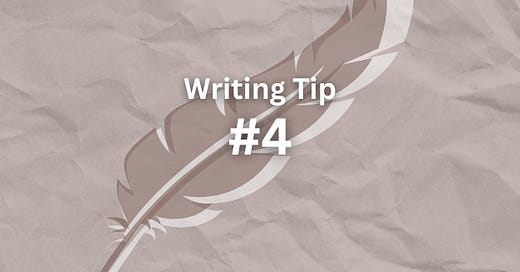I’m going to give you the impossible task of building a house without a blueprint. You may have a vision of the final product, but without a plan, the process would be chaotic, inefficient, and prone to mistakes. The same is true for writing. Whether you’re crafting a novel, an essay, or a blog post, outlining is the blueprint that guides your work and sets you up for success
Outlining is more than just a preliminary step - it’s a powerful tool that can save you time, reduce stress, and elevate the quality of your writing.
Why outlining works
Outlining is often misunderstood as a rigid, creativity-stifling process. In reality, it’s the opposite. A good outline provides structure while leaving room for flexibility and inspiration. Here is why it’s effective:
Clarity of vision: an outline helps you define your main ideas, themes, and goals before you start writing. This clarity keeps you focused and prevents aimless rambling.
Efficiency: with a roadmap in place, you'll spend less time staring at a blank page and more time writing.
Consistency: outlining ensures your writing flows logically and stays on track, whether you're working on a short article or a 100,000-word novel
Confidence: Knowing where you’re going eliminates the fear of the unknown and makes the writing process less daunting.
How to create an effective outline
The beauty of outlining is that there’s no one-size-sits-all approach. Your outline can be as detailed or as simple as you need it to be.
Step 1: Start with your purpose
Ask yourself:
what is the goal of your piece?
who is the audience?
what message do I want to convey?
Your answers will shape the direction of your outline and ensure your writing stays focused on the main objective.
Step 2: Brainstorm ideas
Jot down all the ideas, themes, and points you want to include in your writing. Don’t worry about organization at this stage. Allow the creativity to flow.
Step 3: Organise your thoughts
Now it’s time to bring order to your chaos. Group related ideas together and arrange them in a logical sequence.
For an essay: introduction, body paragraphs, conclusion
For a novel: act 1 (setup), act 2 (conflict), act 3 (resolution)
For a blog post: Hook, main points, call to action
Step 4: Add details
Flesh out your outline by adding supporting points, examples, or subheadings. The more detailed your outline, the easier it will be to write.
Step 5: Stay flexible
Your outline is a guide, a rulebook. If new ideas emerge as you write, don’t be afraid to adjust your plan.
Types of outlines
Different projects call for different types of outlines
The Bullet Point Outline: a simple, straightforward list of key points. For short pieces like blog posts or essays
The chapter-by-chapter outline: a detailed breakdown of each chapter or section. ideal for novels or long form nonfiction
The Mind Map: a visual outline that starts with a central idea and branches out into subtopics. Best for organising complex ideas.
The beat sheet: a storytelling tool that maps out the key events in a narrative. Used most by screenwriters and novelists.
Tips for Outlining Success
Start Small: If you‘re new to outlining, begin with a simple structure and gradually add more detail as you become comfortable.
Use tools: Scrivener, Trello, or even a good old-fashioned notebook can make outlining easier
Set a time limit: don’t get stuck in the outlining phase. Set a timer and aim to complete the outline in one sitting
Review and Revise: revisit your outline as you write. It’s a living document that can evolve with your ideas.
Common outlining mistakes to avoid
Over-outlining: Too much detail can stifle creativity. Leave room for spontaneity.
Under-outlining: too little structure can lead to confusion. Find the right balance for your project.
Ignoring your outline: if you’ve taken the time to create an outline, there is no point in abandoning it. You created it for a reason, use it.
To find the middle ground between over-outlining and under-outlining would be to continuously ask yourself questions. The more questions you answer, the less confused your readers will be. You are more likely to create plot holes where you have all your points covered.
The Mindset of a Strategic Writer
Outlining isn’t just about planning - it’s about thinking strategically. It’s about understanding your goals, anticipating challenges, and setting yourself up for success. You make it so much harder on yourself when you keep every note and idea locked away in your head. It is bound to get lost and forgotten a lot easier. Allow your brain to breathe and bring your ideas out in front of you.
Outlining is your own space. You can take the points I have collected or you can take inspiration and do what works best for you. We all think differently, so do not assume that you can’t change your mind, or that the plan you create is the one you have to stick to. That is the idea behind drafting your work. This first outcome will never be the final, and surely not the last. Allow yourself a balance of flexibility and structure.
The next time you sit down to write, don’t dive in headfirst. take a moment to plan. Your future self and, your readers, will thank you.




This is beautiful, thank you. I’m working on planning a little less. AND ALSO reading this validated my outlining and brainstorming process! It also gave me some clarity on one of my projects. You’re awesome.